Vaive was then signed as a free agent by the Birmingham Bulls of the World Hockey Association as part of their strategy to sign underage junior players in an effort to acquire them before the NHL rules would allow them to be drafted after they turned 20 in the final, desperate days of the WHA.
Vaive was one of six underage players on the Bulls roster that season, which earned the club the nickname of the "Baby Bulls". The other five to join Vaive were Craig Hartsburg, Rob Ramage and Gaston Gingras on defense, goaltender Pat Riggin and forward Michel Goulet. Vaive not only led the Bulls in scoring that season with 26 goals and 59 points in 75 games, but also led the entire WHA in penalty minutes with 248.
Following the season, Vaive was drafted by the Vancouver Canucks at the 1979 NHL Entry Draft with the fifth overall pick. Vaive was free to play for Vancouver, as the WHA ceased operations after the 1978-79 season. Four of the six remaining teams entered the NHL as expansion clubs, the New England Whalers, Winnipeg Jets, Edmonton Oilers and Quebec Nordiques, while the Cincinnati Stingers and the Bulls folded.
Vaive then joined the Canucks for the 1979-80 season, but his time in Vancouver was short lived, as he played just 47 games before being traded to the Toronto Maple Leafs during his rookie season when he and Bill Derlago were dealt for Tiger Williams and Jerry Butler. Vaive had scored 13 goals and 21 points with the Canucks and then added another 9 goals and 16 points in 22 games for the Maple Leafs, a total of 22 goals his rookie season.
In 1980-81, his point total rose to 33 goals and 62 points before he joined the ranks of the elite on this date in 1982 when he became the first player in Toronto Maple Leafs history to score 50 goals in a season during a 4-3 win over the St. Louis Blues. He eventually finished the season with 54 goals and 89 points to lead Toronto in scoring.
Following the season Vaive made his World Championships debut for Canada where he won a bronze medal with 3 goals and 4 points in 9 games.
He backed that up with 51 goals in 1982-83 and 52 in 1982-83 on his way to a career high 93 points as he led the club in scoring for the second time. He was name the captain of the Maple Leafs in 1982 and would hold that position through 1986. He also began a run of three straight NHL All-Star Game appearances in 1982, 1983 and 1984.
While his goal production dipped to 35, he again was Toronto's leading scorer in 1984-85 with 68 points. He again suited up for Canada following the end of the NHL regular season and contributed 8 points in 10 games on his way to a silver medal.
He would play two more seasons with the Maple Leafs with similar totals (33 g - 64 pts, 32 g - 66 pts) before he was involved in a trade which sent Vaive, Steve Thomas and Bob McGill to the Chicago Blackhawks in exchange for Al Secord and Ed Olczyk.
His first season in Chicago was his best, as he joined Denis Savard (44) and Steve Larmer (41) as 40 goal scorers with Vaive finished second on the team with 43.
He started the 1988-89 season with the Blackhawks, but after 30 games, in December he was traded to the Buffalo Sabres but was limited to just 28 games due to injuries.
Vaive would play two more full seasons with the Sabres, averaging 27 goals and 50 points before one final season of 1991-92 where he played 12 games with the Rochester Americans of the AHL and 20 games with Buffalo in the NHL.
He would play one final season of pro hockey in 1992-93 after being signed by the Vancouver organization, seeing action in 38 games for the Hamilton Canucks of the AHL, where he scored 31 goals in 38 games. He would immediately become a head coach for the South Carolina Stingrays of the ECHL for five seasons following his playing days, which included a championship in 1997 followed by stints in the AHL and OHL.
His final NHL totals were 876 games with 441 goals and 788 points. He would also add 43 points in 54 playoff games during his career.
Today's featured jersey is a 1981-82 Toronto Maple Leafs Rick Vaive jersey as worn the season he became the first Maple Leafs player to score 50 goals in a season on his way to 54.
The Maple Leafs adopted this jersey style for the 1970-71 season with a lace up collar. After two seasons they changed to a v-neck collar for 1972-73 only to return to the lace up collar for two additional seasons. It was back to the v-neck collar in 1975-76.
Names arrived on the back in 1978-79, but not without a fight from Maple Leafs owner Harold Ballard, who thought player names on the back would hurt the sales of programs. The jerseys would then remain the same all the way through the 1991-92 season, a run of 21 years in all.
When the team moved to Birmingham for the 1976-77 season, blue trim was added to the red stripes around the arms and waist, changing them from two colors to three. They wore a lace up collar in 1976-77 and 1977-78 and went with a v-neck collar for their final season of play.
Canada first wore this style for the 1980 Olympics and continued to wear it through the 1982 World Championships.

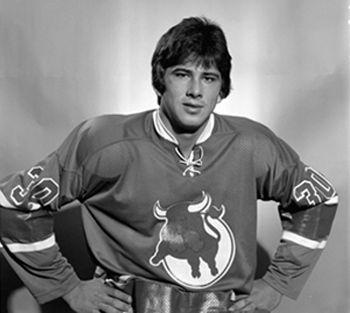
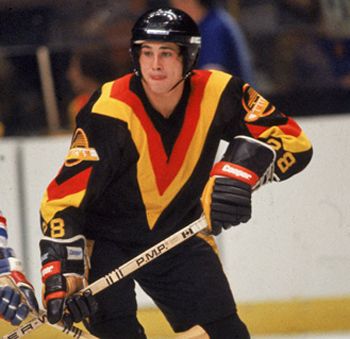
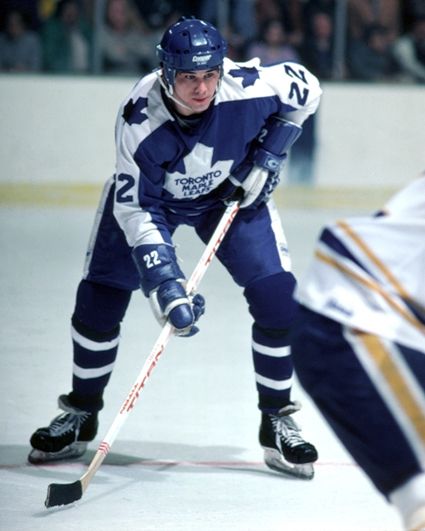
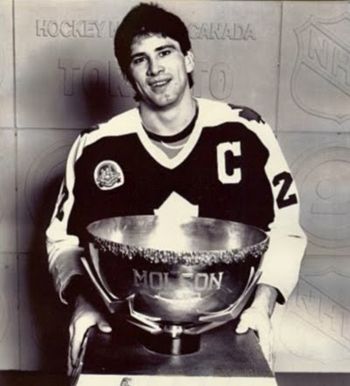
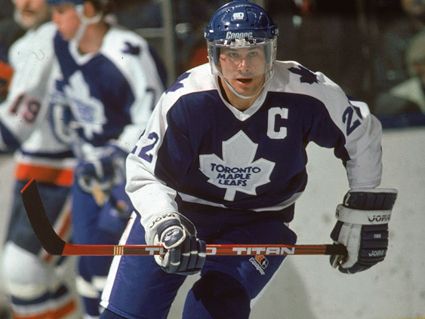
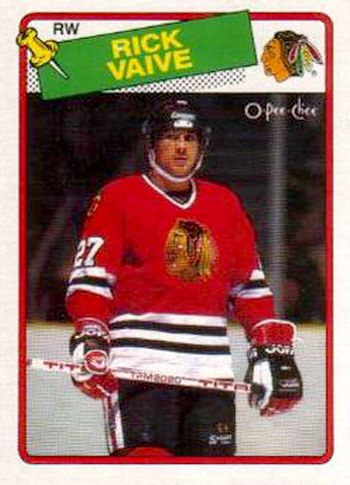
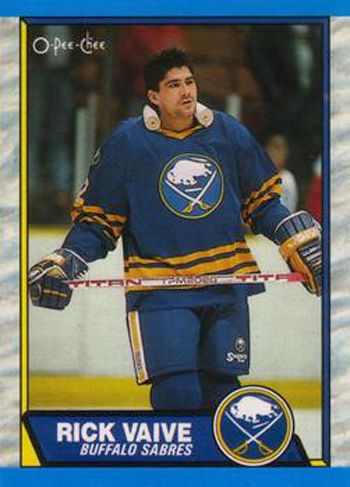
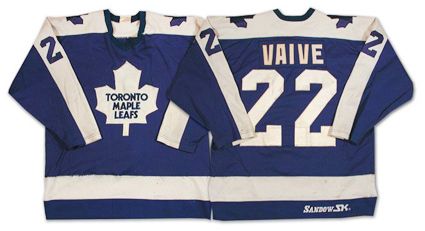
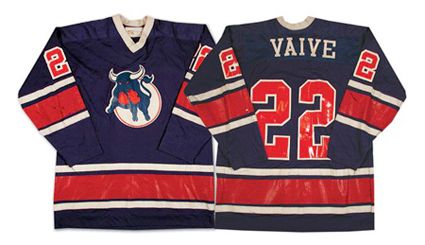
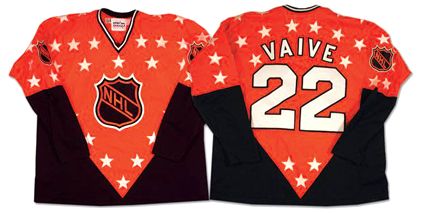
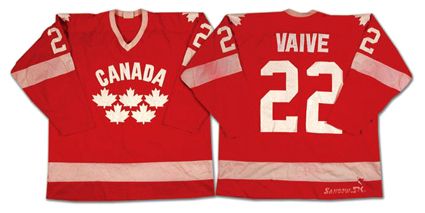










No comments:
Post a Comment
We welcome and encourage genuine comments and corrections from our readers. Please no spam. It will not be approved and never seen.